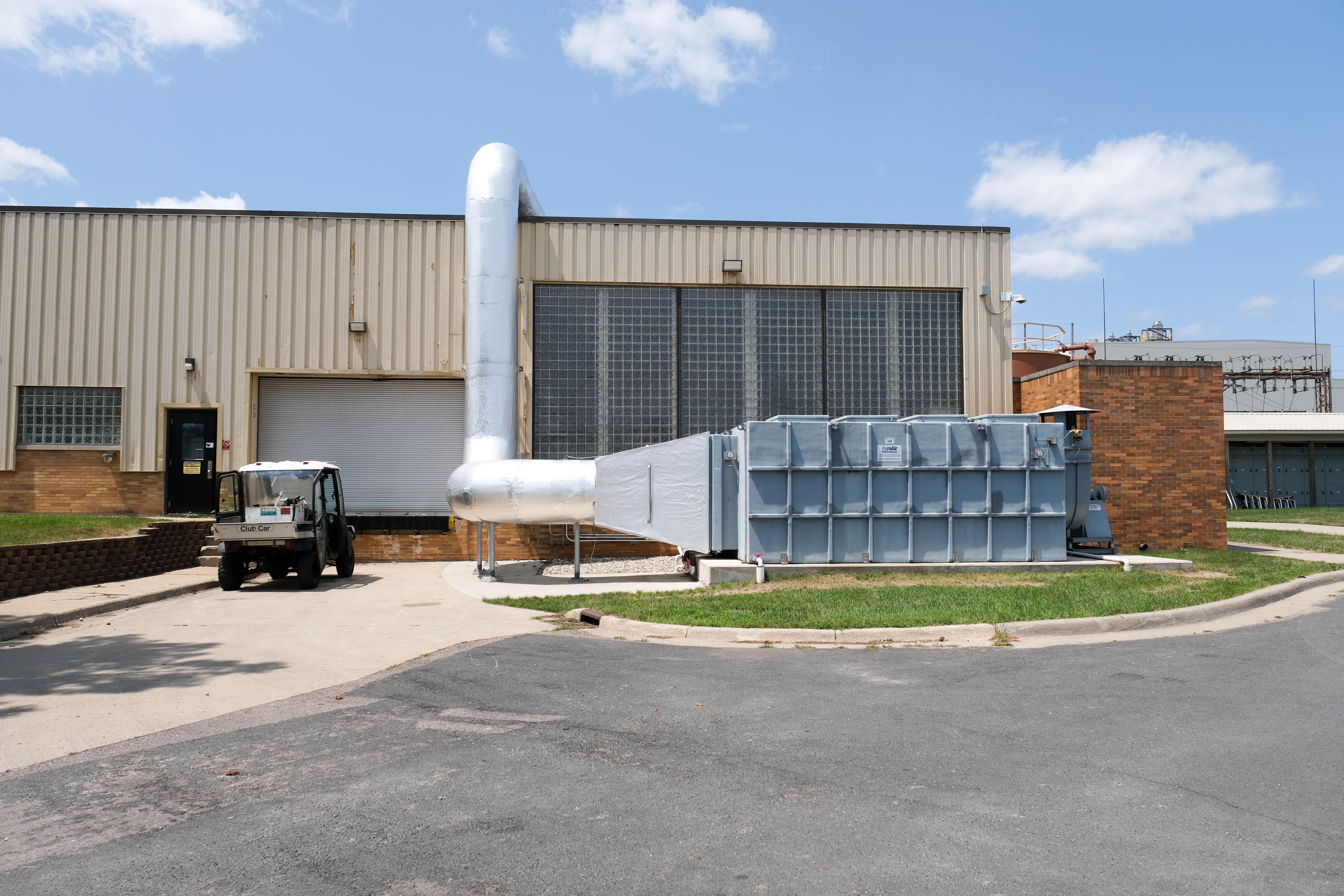Fresher Air in Kalamazoo
We all use water, and in the Kalamazoo area, that water eventually ends up at the Kalamazoo Water Reclamation Plant (KWRP). Here, it undergoes a series of treatment processes until it can be safely released to the Kalamazoo River. On an average day, the KWRP treats about 27 million gallons of wastewater.
Wastewater naturally produces hydrogen sulfide (H2S), a colorless gas that has a smell like rotten eggs. For the past five years, we’ve been designing, building, and implementing changes to the KWRP and our sewer system to reduce H2S and the odors it causes. A sensor network at the KWRP and in the surrounding neighborhoods has shown that this work is paying off. Average sensor readings at the KWRP and the nearby neighborhoods have decreased by more than 80% since 2019. Here are some of the things we’ve been working on to reduce H2S in Kalamazoo.
Monitoring for H2S
To address sources of H2S, we first needed to know how much hydrogen sulfide was in the air, and when and where levels were the highest. We installed a network of sensors at the wastewater treatment plant and in the surrounding neighborhoods to continuously monitor levels of H2S. These sensors give us objective data that we use to identify the sources of H2S so we can address them. The sensor data also allows us to evaluate how other projects impact H2S emissions.
View H2S Data Live
(XLSX, 29MB)View Sensor Data, 2019 - 2024(XLSX, 24MB)
Improved Processes
Since installing the sensor network, we’ve changed our treatment processes too. We replaced the equipment that we use to remove water from the solid material at the end of the process with more efficient centrifuges. The centrifuges remove more water, plus they keep the waste material enclosed. As a result, fewer trucks are needed to remove less waste from the plant, so there are fewer sources of odor from this process.
And soon we’ll start adding peroxide into our treatment process. Peroxide reacts with H2S and helps further reduce it before it even reaches the dewatering process.
 Better Air Filtration
Better Air Filtration
We’ve also installed new air filtration at the KWRP. Five giant air filters (called Carbon Scrubbers) suck the air from inside the plant’s facilities and filter it before it’s released into the atmosphere. They work just like any air filter in your home, just on an industrial scale. Each one is bigger than a large SUV. There are four at the plant and one at a key location in the sewer network. Through 2024, we’ll install five more filters within the sewer network, so 10 industrial filters will continuously be removing odor-causing compounds from the treatment plant and sewer system by the end of next year. We’ve done modeling on our sewer network, so we know where to install these next filters to have the most benefit.
Redesigned Sewer Pipes
In some cases, the design of sewer pipes contributes to odors, too. That’s the case for one particular sewer pipe that connects from Graphics Packaging to the wastewater treatment plant. Elevation changes in this pipe create turbulence in the wastewater, which agitates it and causes H2S to be released. We rebuilt this pipe in 2024 to remove that turbulence, and vapor seal it so no air can escape.
Even More Monitoring
We’re doing a lot to reduce H2S in our air, but there’s more to air quality than just that. We started a new partnership with JustAir to monitor the Air Quality Index (AQI) in Kalamazoo. AQI is a standardized way to monitor pollution and overall air quality (there are AQI sensors all over the world). Until recently, there was only one in the Kalamazoo area at the Kalamazoo Fairgrounds. With JustAir, we now have a network of 16 sensors monitoring AQI citywide, so we can see how it varies in different parts of the city. Anyone can see AQI data on a public dashboard. You can even sign up for alerts.
Sign Up for AQI Alerts
So What Does This All Mean?
We know that odors and pollution are more than just a nuisance. We hear your concerns and we’re taking this issue very seriously. We’ve invested more than $5 million to reduce odors and improve our air quality and the data shows it is paying off. Sensors at the KWRP and in the neighborhoods nearby show overall levels of H2S are significantly lower. We may not be 100% there yet, but our efforts have these numbers moving in the right direction and with millions of dollars of investments still ahead, we’re not going to stop here.